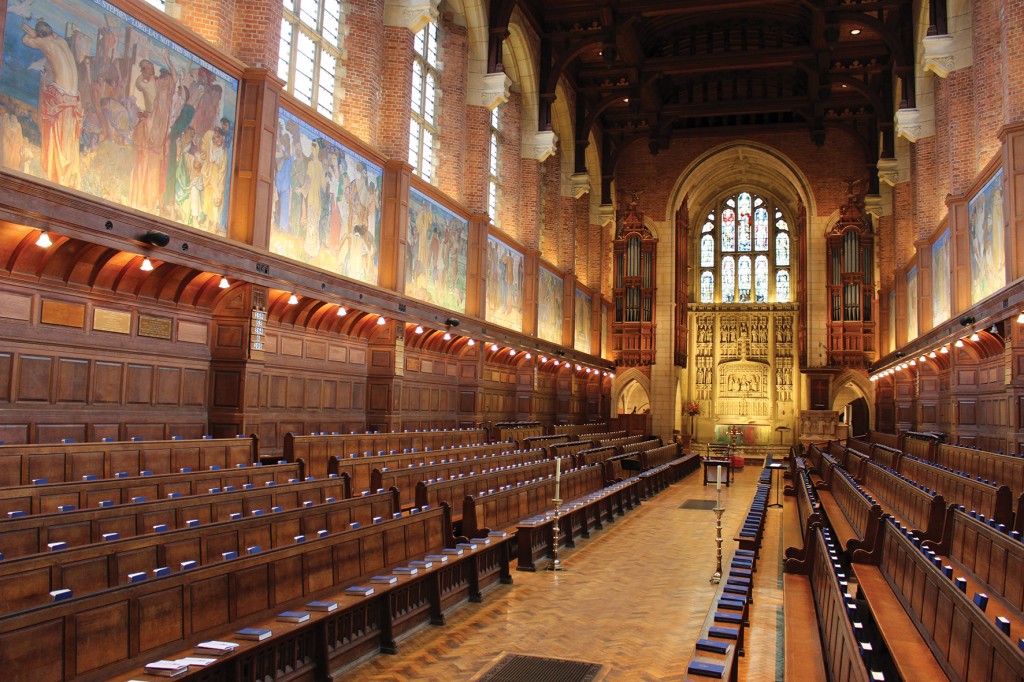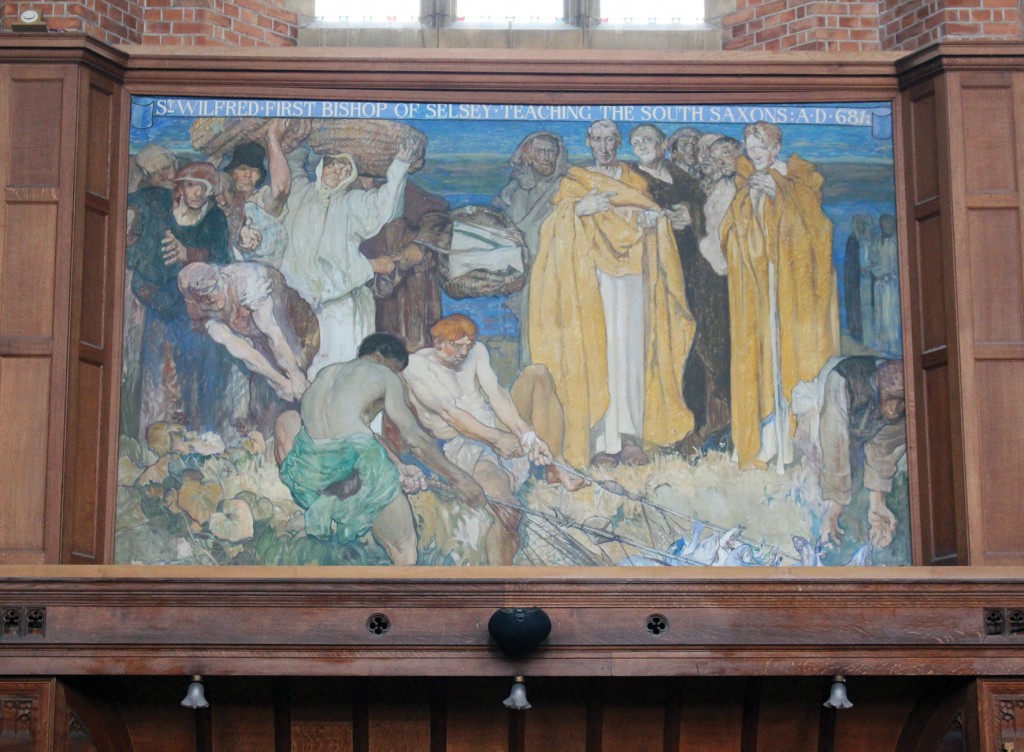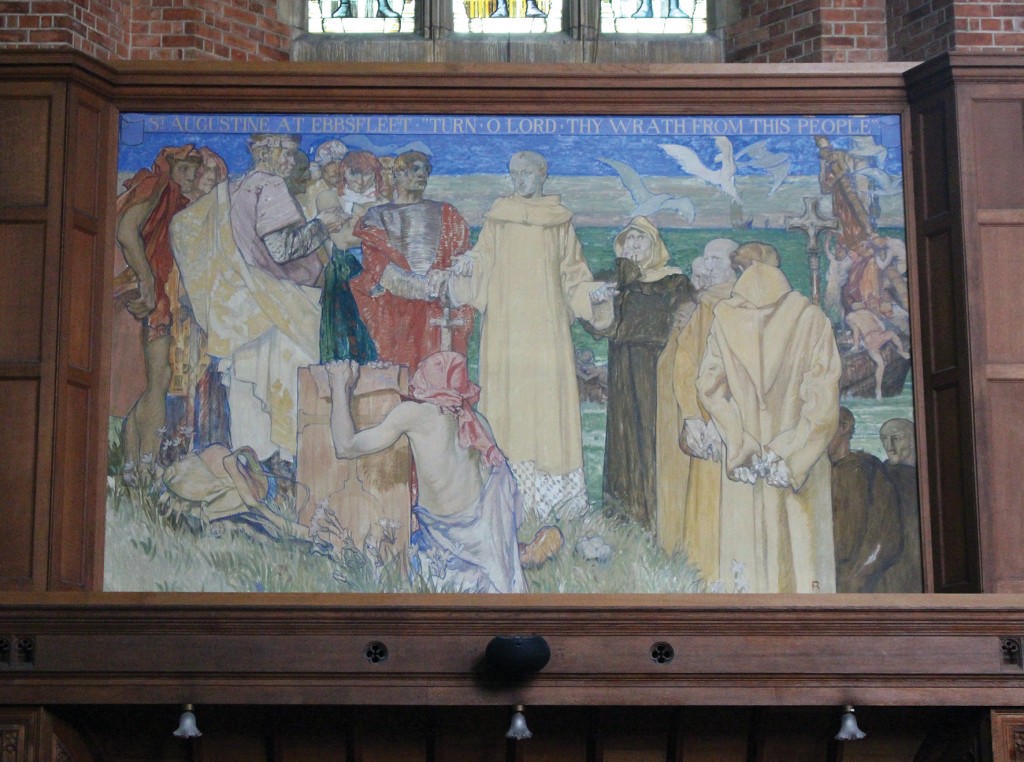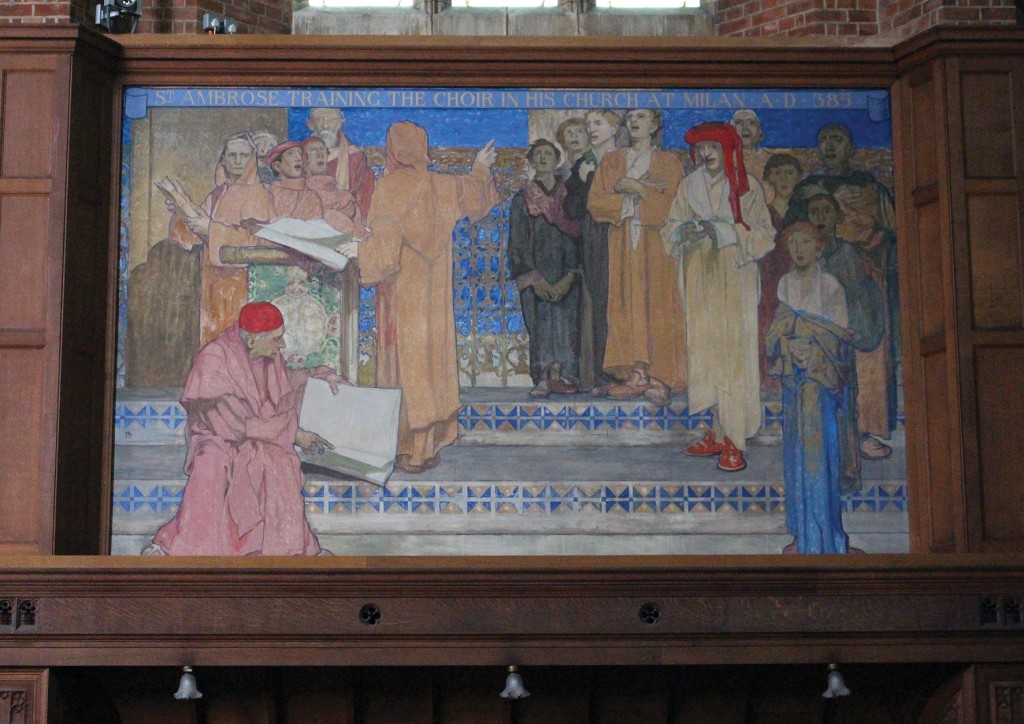
Frank Brangwyn (1867-1956) was an important and influential artist in the late 19th and early 20th centuries. He bought a house in South Street, Ditchling called The Jointure in 1918. It was to remain his Sussex country home. He and his wife, Lucy, divided their time between London and Sussex.
In Ditchling he was reacquainted with the artist Eric Gill who had moved there in 1907. Together with a group of fellow artists Gill founded the Roman Catholic Guild of St Joseph and St Dominic at Ditchling. Thanks to their work this Sussex village had become a centre for the Arts and Crafts movement. Whilst Brangwyn was sympathetic to the cause of the craftsman artist he strongly disagreed with many of the views and practices promoted by some members of the Guild.
As a child Frank Brangwyn displayed a precocious artistic talent. His father, William, ran a thriving ecclesiastical atelier in Bruges whose output was predominately sold through his Baker Street shop in London. Brangwyn was introduced to William Morris by the renowned designer and architect Arthur Heygate Mackmurdo. In 1882, at the age of fifteen, Brangwyn began to work in the Morris workshops. He brought some of the necessary skills from having worked with his father. The young artist showed a particular gift for transferring Morris’s designs onto squared up canvases, skills necessary for the manufacture of tapestries and woodblocks for wallpapers.

Brangwyn had begun work on the panels in the chapel at Christ’s Hospital School in 1912 though they were not completed until 1923. Christ’s Hospital School was re-sited from the City of London to its current location near Horsham between 1893and 1902. The architect Sir Aston Webb, with his partner Ingress Bell, designed the Tudor-Gothic revival buildings which are still central to the school’s character today. Sir Aston Webb had supported Frank Brangwyn putting him forward for large scale projects over many years. Webb was able to secure Brangwyn the commission to paint the school’s chapel. The subjects were devised by the headmaster, the Revd. Dr A. W. Upcott. The scheme follows a procession from the earliest stories of the Church to the conversion of Britain and the mission of the Church of England.

The panels are painted in tempera which gives them their luminous quality. They follow in a long tradition of wall painting in Sussex which stretches back to Saxon times. I am therefore particularly struck by the panel depicting St Wilfrid (c.633-709) who converted the South Saxons to Christianity when he came to Selsey from Northumbria and Ripon. Here he is depicted standing teaching as the Saxon’s draw in their nets. It is said that the South Saxons fished only for eels and that it was St Wilfred who taught them how to catch fish. Their first catch numbered three hundred and the amazed people turned to God. As they were baptized the rain began to fall ending three years of drought and despair. In thanks King Ethelwalh gave Wilfred eighty-seven hides of land at Selsey. St Wilfrid built a monastery and Cathedral on the Selsey peninsular which was lost when a new Cathedral was built by the Normans at Chichester. The panels show the influence of the Renaissance. Brangwyn, had visited Assisi and Venice soon after his marriage to Lucy in 1896. But these decorative paintings also show the influence of the Arts and Crafts movement, the Post-Impressionists and the strong, rich use of colour promoted by artist like Henri Matisse. The panels are united by the titled friezes with their rich blue grounds.

The panels are important not just as fine examples of Brangwyn’s work, but because they form part of a common narrative amongst modern British artists at the time who sought to reaffirm what it is to be British and to redeem our nation from the experience of the first industrialized world war. The panels are honest about the costs of standing up for righteousness with illustrations of Christian martyrs, many associated with Britain. But they are also hopeful in their vibrant Mediterranean palette, clearly depicting the triumph of good over evil.
Brangwyn articulated the view that work should be done meaningfully, to the highest standards, with humility and for the love of God rather than for gain or self-promotion. These aspirations still resonate with the school today. Christ’s Hospital is in many ways unique, offering an independent education of the highest calibre to children with academic potential, from all walks of life. It is a child’s ability and potential to benefit from a Christ’s Hospital education that determines their selection not their ability to pay. The Christian character of the Foundation and School has remained a constant in the life of Christ’s Hospital for over four and a half centuries. Christian values sustain the whole of Christ’s Hospital’s life, instilling care for the individual and tolerance whilst supplying a moral framework for the delivery of every aspect of education.
These values are at the heart of our nation and we should be grateful to all who make aspirational education and opportunity accessible to the broadest cohort of students from diverse social backgrounds. For more than a century Christ’s Hospital has added to the richness of the Horsham District by its example, outreach and patronage of the arts. It is rightly celebrated. Christ’s Hospital is a working school dedicated to preparing young people to flourish and contribute to our society. However, you can enjoy the remarkable Frank Brangwyn’s and some of the school’s artistic, architectural and historical treasures by joining one of the Verrio tours. Tours are available on Thursdays strictly by prior arrangement. For further information and to book a tour contact Lucia Brown on 01403 247407.
By Revd. Rupert Toovey. Originally published on 3rd December 2014 in the West Sussex Gazette.